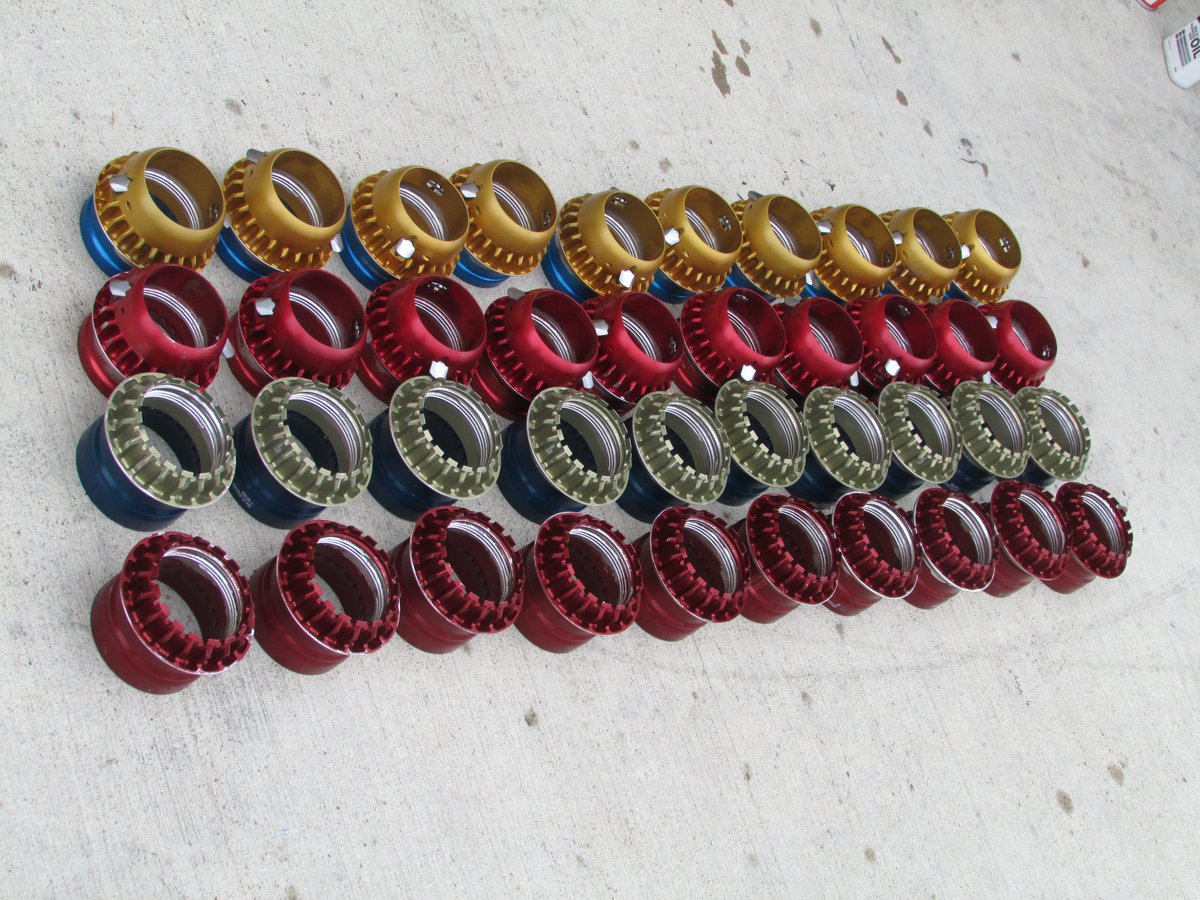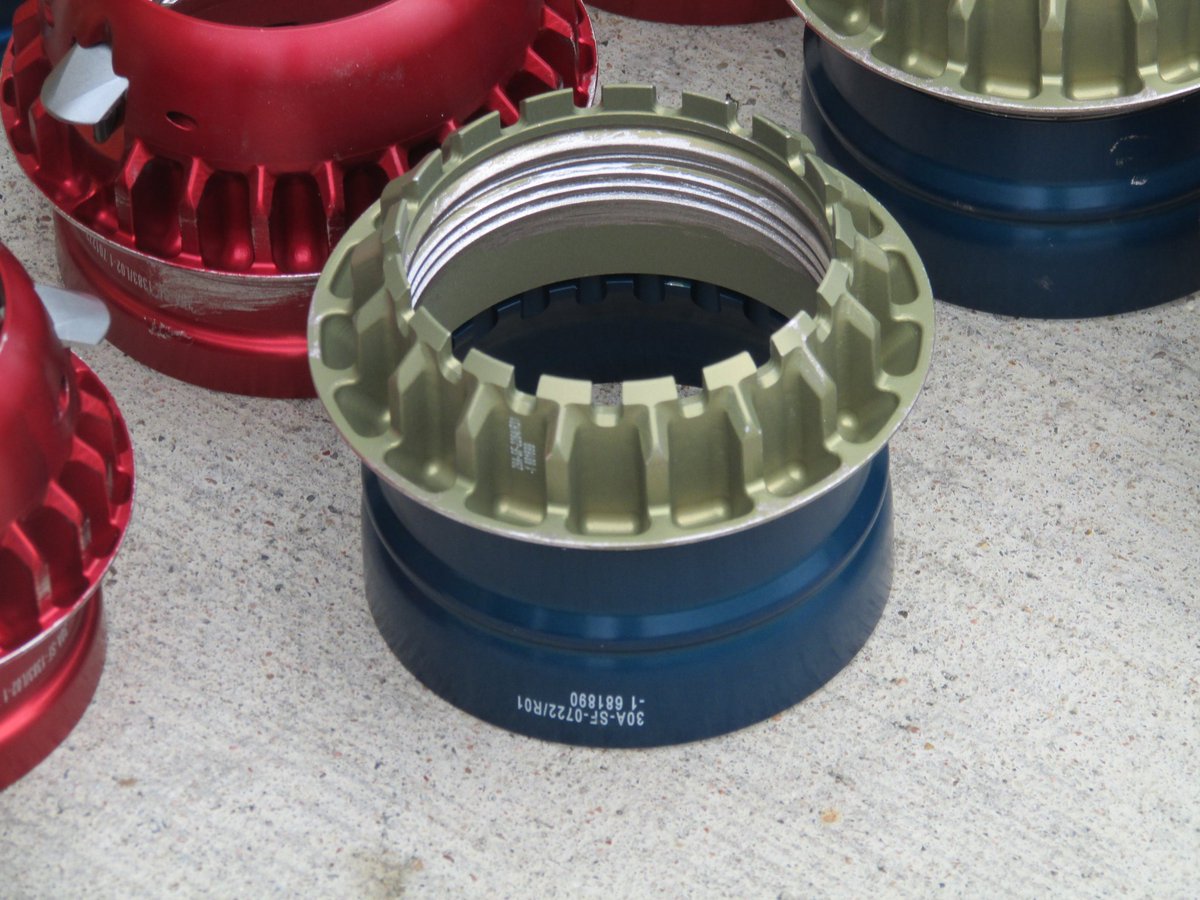
Another #AbsurdF1Comparison - springs.
A roadcar spring (large), Williams rear corner spring, Force India torsion bar
#F1 cars used to use coil springs mounted around dampers (coilovers) to support the car. Torsion bars replaced coils as they were easier to package (1990s).


A roadcar spring (large), Williams rear corner spring, Force India torsion bar
#F1 cars used to use coil springs mounted around dampers (coilovers) to support the car. Torsion bars replaced coils as they were easier to package (1990s).



There are other spring types used on #F1 car suspension.
Often heave movement is controlled by Belleville washers, flat cone metal springs that can be stacked to gain the reqd spring rate.
Then there are carbon fibre disc springs, similar to bellevilles.

Often heave movement is controlled by Belleville washers, flat cone metal springs that can be stacked to gain the reqd spring rate.
Then there are carbon fibre disc springs, similar to bellevilles.


The problem with coil springs mounted over dampers is the sideforce they out into the damper. This video shows the effect.
Additionally coilovers are large assemblies to package and any change in spring or damper means both have to be removed.
Additionally coilovers are large assemblies to package and any change in spring or damper means both have to be removed.
Lastly, there are gas springs.
They look like a damper, but the piston compresses the fluid rather than passes through it. Inside is gas (nitrogen) and sometimes oil.
It can have a high level of preload (from gas pressure).
But also with oil inside can have a non linear effect
They look like a damper, but the piston compresses the fluid rather than passes through it. Inside is gas (nitrogen) and sometimes oil.
It can have a high level of preload (from gas pressure).
But also with oil inside can have a non linear effect

• • •
Missing some Tweet in this thread? You can try to
force a refresh




























